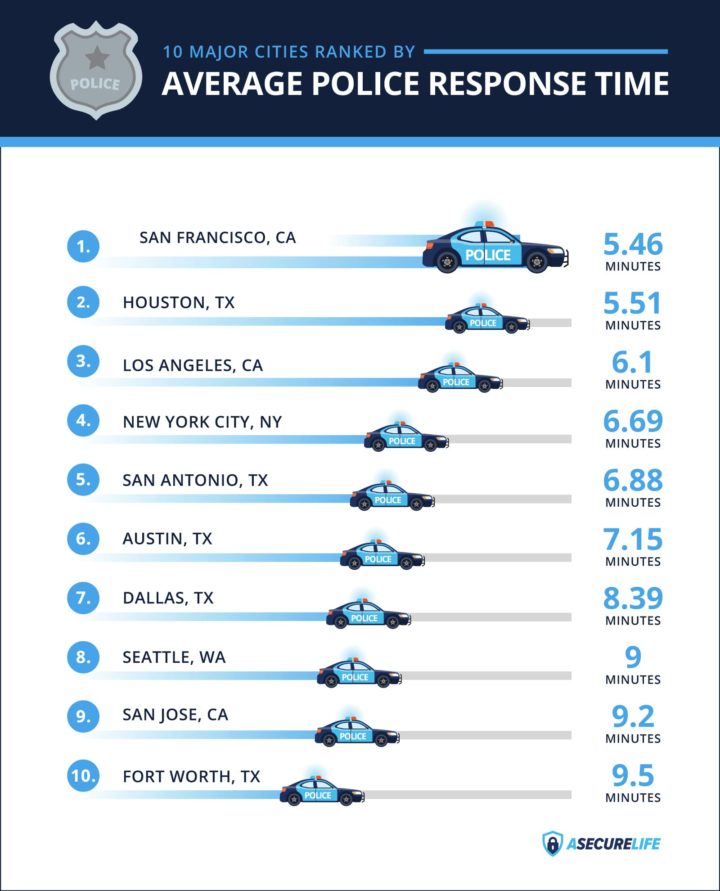When emergencies come up, it’s comforting to know that first responders are typically only a few minutes away, regardless of where you are in the city. But since every minute counts in these instances, we decided to take a look at average police response times in a number of big cities throughout the US.
Response times differ from city to city based on factors like city population, police funding, and available resources in a given region. When it comes to Priority 1 calls––the highest-priority emergencies that usually include life-threatening emergencies or dangerous active crimes—the difference between a five-minute and 10-minute response time can make all the difference.


